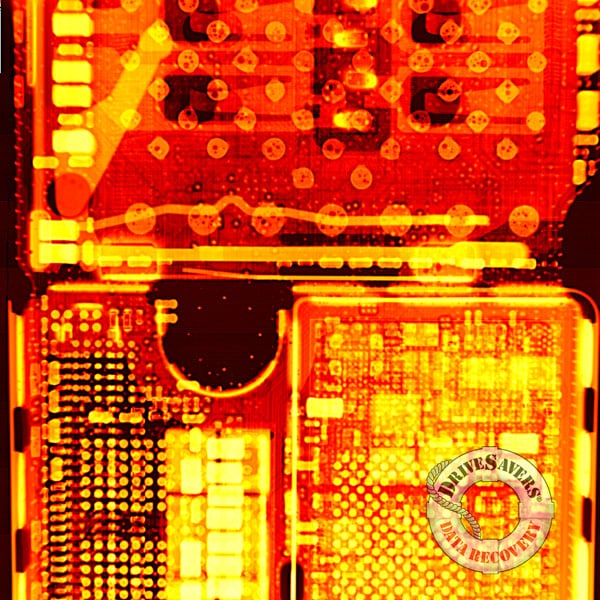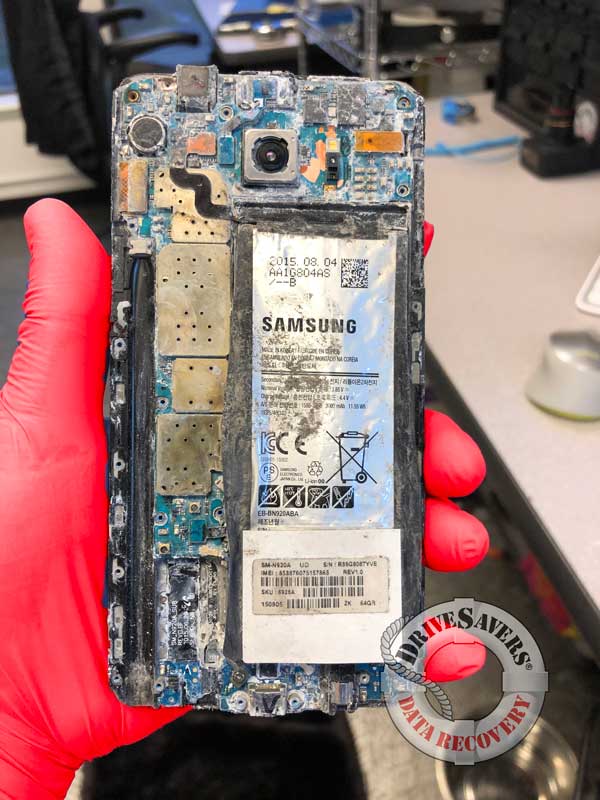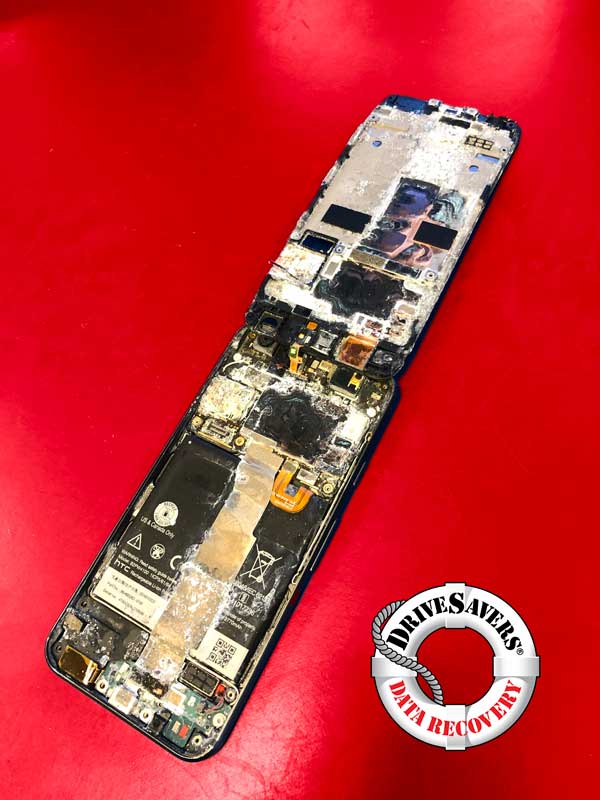In this article, we’ll break down what NIST 800-88 actually requires, why storage media of all types can defy expectations, and how verification services close the gap between intention and assurance.
What Happens When a Smartphone Gets Wet?

How many people do you know that have dropped their phone in water? Chances are you know at least two or three. DriveSavers saw seventy-eight liquid-damaged smartphones in this past June alone. If the data on a water-logged phone was just backed up, then your data is safe. Just buy another phone, restore the data from the backup to the new phone, and you’re good to go.
No backup? Well…that’s different. If the smartphone turns on, back it up immediately.
If it won’t turn on and the data is not important, then you can buy a replacement, forget about the contents and start regularly backing up from this point on. If, however, your data is important, then you need some help. And this needs to be done quickly, or the loss can become permanent due to corrosion.
Once enough corrosion has occurred, the chances of a successful recovery are far less. All your pictures and videos, your contacts, your notes—now possibly all lost forever.
What's Happening Inside a Wet Phone
There are three types of major internal components that can be damaged. The capacitors, resistors and integrated circuits (ICs), including the memory chip, are all mounted on the printed circuit board (PCB) inside the phone. There can be thousands of these components—some so tiny they cannot be seen with the naked eye.
For example, there are hundreds of capacitors on an iPhone, and every one of them is subject to failure, affecting the operation of the device. There are also thousands of solder connections that can and will be affected by corrosion. The process of checking each connection is complex but important in order to learn the magnitude of the problem and also to identify what parts need to be manipulated in the lab.
DriveSavers uses X-ray technology to find liquid damage hidden underneath surface mount components to identify the problem area in a non-invasive way. This allows us to be more targeted in our efforts and provides a greater chance for a successful recovery. The data recovery work is then done under a high-power microscope.

What to Do If a Phone Gets Wet


The Need for Speed
Speed is of the essence. Even just a few days can make a big difference in the final outcome. It’s hard to estimate how quickly a phone’s components will break down due to the corrosion caused by the liquid, but the quicker DriveSavers can get the device, the better our chances of a good recovery.
You need an experienced data recovery service, like DriveSavers, to work on a wet phone. The longer it takes to start the work, the greater the chance of losing everything on the liquid-damaged device. The idea is to slow down any corrosion before permanent data loss occurs.
Step One: Cut the Power
If you are able to remove the battery from your liquid or water-damaged phone, that is the first thing you should do. An electric charge from the battery could cause more rapid corrosion of the phone’s memory, data circuits and other flash components. If the battery is not meant to be removed from the phone, do not attempt to do so. Opening the sealed device may cause further damage.
Never try to charge a wet phone or attempt to restart it once it fails. Introducing an electronic charge in the device when it’s wet could actually speed up the corrosion process and make matters worse.
Step Two: Dry It and Send It—ASAP
If you have time to dry out your phone, you can wipe the outside with paper towels and leave it in a warm, dry spot, but please do not put it in the oven. Putting the device in front of a fan may help speed up evaporation, or in a humid environment, a dehumidifier can be used.
Warning: If you power up your phone when it has not sufficiently dried out, you will likely short out the circuitry of your phone, essentially frying its components and reducing the chances of saving your data to less than 10%.
More important than drying the phone, however, is getting it to a professional quickly. We cannot stress this enough!
What About Rice?
Despite any “Internet” guidance to the contrary, do not put the device in a bag of rice.
If your phone has been submerged in water, that water has found its way into every nook and cranny. That’s what liquid does—it flows into any open space it can access.
Putting your phone into a drying agent like rice will only work to absorb water on the surface of your phone and close to the surface. It will not reach the metal components and connections that make your phone work. In addition, the epoxy that holds the electronics in place within your phone will retain moisture and will not fully dry from this method. In fact, tests have shown that rice is actually slower than just leaving the phone out to dry.
Waiting too long to send a phone for data recovery just gives the hidden moisture more time to corrode the inner workings, which may also permanently destroy the phone and any data stored on it. In addition, rice naturally has dust and grime on it that usually makes its way into the device. It can gunk up the components just like corrosion does.
If you have used the rice trick and the phone turns on, don’t expect it to function for long. The hidden moisture will work to corrode metal connections, and sooner or later (likely sooner), your phone will fail permanently.
As stated above, chances of a successful recovery are far less likely once there’s corrosion, and you may permanently lose all your data.
Prevent Data Loss from Water
Clearly, the first suggestion is for you to back up your smartphone because no matter what precautions you take, you never really know what the future may hold. If the data on your phone is important to you, back it up to at least two places. For example, a computer and the cloud.
There are all kinds of accessories meant to protect your phone from water damage. These include waterproof cases, bags, and other containers. You could also purchase a water-resistant phone, although you should probably avoid contact with water even with these because there is no such thing as a fully waterproof phone.
DriveSavers recovers data from every type of storage device with every type of data loss situation, including hundreds of iPhones, Androids, and other smartphones every month. If you’ve dropped your phone in the ocean, pool, toilet, or otherwise lost data, call the experts at DriveSavers 24/7 at (800)-440-1904





